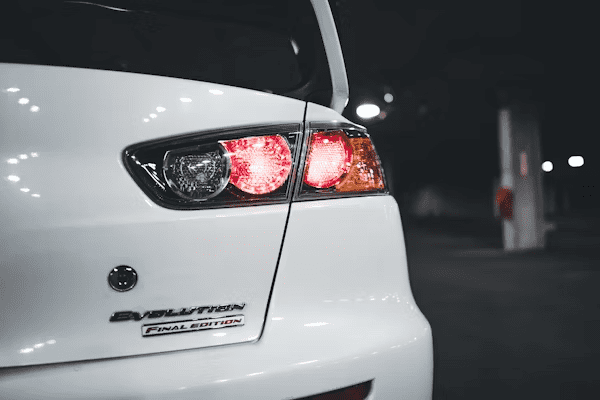Automotive aftermarket businesses usually face the challenge of balancing emerging design trends and honoring aesthetic classics. Custom car lights can help auto suppliers, custom shops, and auto refurbishers to upgrade the vehicles and at the same time, retain their vintage appeal. The purpose of this article is to review vehicles and motorcycles with custom lights, paying attention to design aspects, technical improvements, and modern industry developments. The article is intended to help B2B businesses enhance their product range and develop new markets by integrating modern lighting technology to classic motorcycle components.
Why custom car lights matter
For businesses, implementing custom lighting offers an opportunity to stand out from the competition. In a business-to-business perspective, automotive parts suppliers can focus on restoration and performance shops looking for distinctive products. Moreover, custom car lights improve safety, visibility, and the functionality of the vehicle. Improved vehicle safety and functionality makes these products appealing to end-users as well. Custom lighting offers a modern look and enhances energy efficiency, as well as longevity when compared to traditional halogen lights, providing precision illumination.
The integration of custom car lights allows suppliers to penetrate niche high-end markets where aesthetics and performance of custom car lights is a crucial aspect. Providing solutions alongside classic motorcycle parts allows businesses to target customers seeking authenticity during functionality upgrades.
Key Trends In Vehicle Lighting Design
The advancements in the last decade have been remarkable, and the automotive lighting industry is no stranger to this. Trends such as modular lighting systems, adaptive headlights, and dynamic turn signals are shaping the market. For businesses that have a good knowledge of these trends, they can advise the clients in a way that keeps them from losing their market edge.
LED technology holds the commanding position as the preferred choice of modern car lighting because of its flexibility and efficiency. Its availability in a variety of shapes and sizes allows for both functional and artistic appeal. In the same way, the more precise emitting Laser and OLED lights are gaining popularity among luxurious vehicles because of its futuristic appeal and its high grade upgrades.
As a result of integration of these technologies, suppliers can target workshops and restoration businesses to modernize vehicles to enhance functionality while maintaining historical accuracy.
Imaginative Methods to Modernize Vehicles with Custom Lighting
An original character of a vehicle can still be retained even when undergoing modernization. The vehicle’s lighting can be updated in a number of different ways to maintain the desired style:
- Underbody and Accent Lighting: Subtle LED strips installed under the body of the vehicle can boost the vehicle’s appearance. Additionally, accent lights on grills and side panels can bring out features which enhance the vehicle’s design.
- Adaptive Headlights: Businesses selling vehicle parts to workshops can benefit from adaptive headlights due to their safety and compliance advantages. These systems which are very popular with vehicle owners take cabin lighting to a whole new level because the headlight beam patterns are adjusted based on the vehicle’s speed and the road conditions.
- Retro-Modern Taillights: Vehicles can be fitted with retro styled taillights which are modified with LED technology. This change allows the vehicle to retain its vintage look while providing retrofitted lighting which is much more energy efficient.
- Custom Signal Lighting: Dynamic indicators with side marker LEDs create a premium modern touch. Such features are very popular with restorers of classic cars and motorcycles because they integrate enhanced safety features while retaining a classic look.
When coupled with classic motorcycle parts, these changes become more desirable as they achieve a perfect balance of nostalgia and modern technology.
Automotive Lighting Suppliers Technical Aspects
B2B automotive lighting suppliers have to make sure the manufacturing processes as well as the designs of the car lights cater to the vehicle’s electrical systems as well as lighting safety and law criteria.
- Power and Voltage Considerations: The electrical systems present in different vehicles have LEDs in inbuilt headlights or fog lamps as they draw less power and put less of a load on the vehicle’s battery and alternator.
- Heat Management: Custom lights, such as fog lamps and headlights, require high intensity and burn hot. They also need to be built to keep the heat in check to make sure the lights last a long time and make sure to maintain efficiency.
- Durability and Materials: Aftermarket suppliers need to keep the premium market in mind when selling lights and lamps. To look after the outer housing of the lamps, the suppliers need to use high quality materials to protect the delicate parts from moisture and UV damage.
These are not the only factors, as aftermarket automotive lighting suppliers need to be reliable, adapting to all of the listed factors helps boost the suppliers image to the larger marketplace.
Merging Modern Lighting with Classic Motorcycle Components
Restoration shops are constantly in the look for components that allow the vehicles to become more safe and perform better without forgoing the look of age. For automotive suppliers, this means they have a huge opportunity to merge classic parts with today’s modern lighting systems.
For example, workshops can replace traditional bulbs with LED systems in classic headlamp assemblies, ensuring the original appearance is kept while improving visibility. Furthermore, safety modernizations can be done without aesthetic alterations, such as the incorporation of modern brake lights into vintage tail assemblies. By promoting these solutions which preserve classic motorcycle parts, suppliers enhance their image as the market’s innovation and authenticity providers.
It is vital to emphasize the marriage of custom car lights and classic motorcycle parts in product catalogs and B2B communications. This composite strategy caters to businesses focused on restorations, performance enhancements, and bespoke high-end customization.
Future Perspectives on Lighting Developments in the B2B Automotive Industry
The aftermarket automotive industry is continually adopting innovative technologies. Custom car lights are anticipated to become more popular as autonomous vehicles, smart lighting systems, and vehicle beautification trends gain traction. Early adoption of these solutions, particularly by restoration shops and performance workshops, provides a distinct competitive advantage.
Emerging trends like smart adaptive headlights, programmable RGB illumination for indoor and outdoor use, and wireless connectivity in lighting systems provide expanding opportunities for suppliers. These modern innovations can be integrated with traditional motorcycle components which enables classic vehicles to be modernized for contemporary markets while ensuring compliance with safety and aesthetic standards.
In the B2B automotive segment, custom car lights offer a well-balanced blend of modern and classic design elements, making them strategically eligible for B2B automotive businesses. Through understanding lighting trends, technical requirements, and the placing of lights on classic motorcycle parts, suppliers can meet the needs of restoration shops, niche performance garages, and high-end vehicle refurbishers with innovative lighting.
Forming a competitive edge in the market can be achieved through the right blend of aesthetic appeal, safety features, and modern technology. Enhanced vehicles with custom lighting increase aftermarket business, while simultaneous improvement in customer relations supports business growth.





























